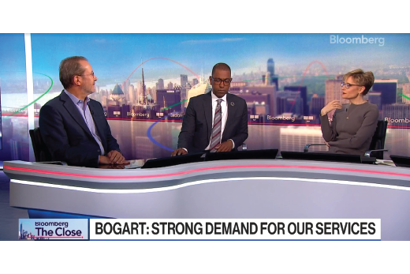Liz Bigham: Kelly to start us off, could you talk about what makes competition and antitrust cases among the most complex and high stakes commercial claims to pursue?
Kelly Daley: Antitrust claims are unique in the legal world, largely because of the way that the damages work. Unlike your ordinary contract case where you might assess how much money you lost under a specific contract which provided for payments of a certain number of dollars or sale of items that have an identified price, and you can therefore calculate the damages lost when a contract is breached. Antitrust claims have to do with market-wide competitive harm, and so it's a variety of complex economic factors that lead to the damages calculation. It can be very difficult to isolate those factors to figure out what part of a price change is attributable to anti-competitive activity as opposed to other market forces, other supply inputs, increased competition from other sources and changes in consumer behavior. So, it really takes an economic expert, often several of them, to figure out what the competitive harm is.
There's also a lot of players on both sides of your typical antitrust case because harms are often market wide. You have a wide variety of plaintiffs who participate on the side of the market that's been competitively harmed. You also often have several defendants—most antitrust cases allege anti-competitive conspiracies among multiple parties who conspired to increase prices or suppress a market. And so, when you have a lot of plaintiffs and a lot of defendants, you have inherent complexity in the claims.
Then proving up the claims is a very document intensive process. You usually have to produce many, many years of purchase records and supply orders, and the defendants have to produce that same information and try to line those up. You have a fairly intensive document collection and production requirements on both sides. So that just makes these claims inherently very complex to prove and to prosecute.
LB: Following up on that, what makes these claims so expensive?
KD: The reason that antitrust claims are high stakes is related to the reason that they're complex. When the harm is market-wide, when you have a lot of plaintiffs involved, you're talking about damages that span an entire market. You're also talking about damages that span many years. Federal antitrust statutes have a four year statute of limitations, but oftentimes we see that the courts will apply some form of equitable tolling doctrine to extend that statute of limitations on the theory that the conspiracy was concealed until some point where the plaintiffs were on actual or constructive notice that the conspiracy was occurring. What that means is you could have 10 or 12 years of damages in these cases where you have to go back and find documents and collect records to prove up the cases, but also the accumulation of damages over that period makes them extremely high stakes and high value.
And I think also from the defendant's side, why they can be very high-stakes litigations is that the very nature of an antitrust conspiracy is that defendants have conspired to generally increase market prices or otherwise influence the price of goods and services. That's very difficult to do if you have a very diffused market. When you have a concentrated market, it's a lot simpler. So oftentimes you're talking about very, very large damages and a relatively small number of defendants who would ultimately be responsible for those damages. Then you have the availability of treble damaging under federal antitrust statutes in most state antitrust statutes as well. When you combine a long period of damages, a concentration among defendants and the potential to triple those damages if the case were ultimately to go to a successful verdict, you have a very significant risk to the defendants in those cases.
LB: Given their high cost. Legal finance can be very useful in antitrust disputes. How do law firms and business litigants use and benefit from legal finance in antitrust matters?
KD: I think there's three places where legal finance really plays a part in complex antitrust litigation. The first of those is the hard costs of the litigation. We talked about how many experts are necessary to prove up complicated economic damages. You often have really significant document collection needs on the plaintiff's side. So the plaintiffs have to go back and search records for a decade sometimes to find supply orders and pricing and to prove up the process by which prices were negotiated. So that document process can be very intensive in terms of identifying the documents, identifying the custodians, collecting the documents, and then reviewing them, often done through third party vendors. So you have really significant, pure out-of-pocket expenses for counsel or for a client in order to prosecute these claims. Most companies, and a lot of law firms aren't interested in spending those kind of dollars, especially when you're looking at a claim that has on average a three to five year duration before resolution. Legal finance is able to come in and help with those out-of-pocket expenses and make it at least a net zero from an out-of-pocket perspective to pursue the claim.
The second place where legal finance can really help is with legal fees. That can take two forms. There's certainly instances where the plaintiff wants to retain antitrust counsel who don't historically work on contingencies. They want to get paid by the hour, but the client doesn't want to be out those legal fees for again, the long duration of these claims. In that instance, legal finance could help the client use counsel of their choice by paying them through finance dollars as opposed to through company dollars.
Then on the law firm side, law firms who take these cases on contingency often feel some stress on the legal fees for the long duration of these claims, for the significant amount of time that they accrue working on these claims. We're able to work with law firms who have taken cases on contingency to help de-risk some portion of the risk that they have taken on in fees. We might be able to pay them a portion of those fees on an ongoing basis to help the firm maintain its cash flows while they bear the risk of the litigation.
I think the last place where legal finance really plays a role on the client side is through the ability to monetize or to advance a portion of the value of the claim. A client who has been harmed competitively has in many instances overpaid for products where they've been excluded from a market where they've lost sales opportunities, and so they have already suffered an economic harm. Asking them to wait three to five years to receive their damages, for some plaintiffs, that's quite an economic hardship. What legal finance is able to do is to treat that future contingent recovery as an asset of the company and to advance a portion of that eventual judgment on a non-recourse basis and let the company recover from some of the economic harm that it's already suffered and go back to its core business, which is presumably not litigation.
This video was recorded in July 2023.
This communication shall not constitute an offer to sell or the solicitation of an offer to buy any ordinary shares or other securities of Burford. This video may not be copied, distributed, published or reproduced, in whole or in part.





